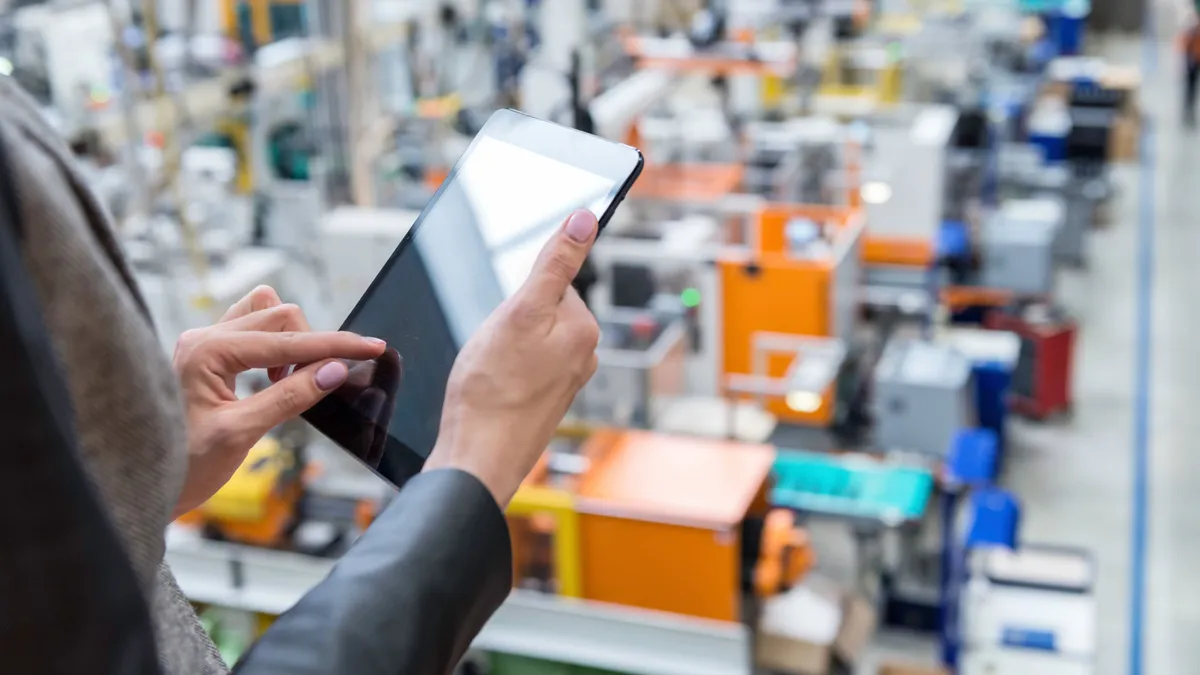The disruption created by COVID-19 led supply chain experts to search for real time visibility to help them move goods and services to the right place at the right time. While being affected by a rapidly shifting operational field, they turned to the tools they already had to see through the murk.
“In an attempt to keep pace, supply chain leaders either looked to IT to help customize their existing core systems, bought expensive point software solutions, or scrambled to manage workflows in DIY tools like spreadsheets and e-mail,” said Kayla Mackay, Solutions Marketing Manager at Quickbase, on the Age of Agility podcast. “Despite all these efforts, supply chain experts are still constrained by unresponsive, inflexible systems and a lack of visibility into supplier data.”
As the global pandemic atmosphere clears, many companies acknowledge that having visibility throughout the entire supply chain is an urgent requirement. This post will show you what good supply chain visibility means, why high supply chain visibility is important to a business, and why companies need unified technology tools to achieve lasting business success.
What Is Supply Chain Visibility?
Supply chain visibility is not merely having insight into your internal data but having connected data from manufacturers to final deliver of products readily accessible when needed. Most companies are forced to react to this disruptive environment without key information. McKinsey & Co. says that 93 percent of procurement and supply leaders are examining their supply chains and looking for ways to increase the resilience of those critical networks. As they build their supply chain visibility attributes for the long-term, they face the following six challenges:
- Adjusting quickly to unanticipated change – According to Quickbase's recent Supply Chain Resiliency Survey, companies are reacting to unexpected changes in the supply chain on a weekly (43%) and daily (36%) basis.
- Suppliers delivering a product or material on time – Bottlenecks cause major manufacturing slowdowns and shutdowns.
- Suppliers delivering low-quality materials or goods – With manufacturing plants working with skeleton crews, unanticipated demand, and sometimes breakneck speed, mistakes happen, which impacts the quality of final products.
- Inability to take fast, corrective action – Consider, for example, the issue of low-quality raw materials. In the retail industry, products made from inferior materials will be returned by consumers.
- Outside forces that threaten the supply chain – There is no end to the list of surprise disruptions that are outside the control of supply chain experts. From import tariffs to worker strikes to container shortages, upheaval causes headaches in the chain.
- Siloed systems that don't share data with one another – Poor understanding of ERP data or workflows managed outside of core systems is a key concern for anyone who seeks visibility.
How Do You Achieve Supply Chain Visibility?
Supply chain managers must make sure the right goods and materials are in the right place at the right time, budgeted for appropriately, and replenished as needed. To do this, they need access to a real time picture to manage every aspect of the chain.
“One of the biggest challenges to maintaining and improving supply chain visibility is disparate siloed technology systems,” Mackay explains. “When your data is stuck in core enterprise resource planning (ERP) or legacy software systems, effectively managing supplier relationships is a major challenge.”
Quickbase can help a supply chain manager increase supply chain visibility into supplier information and performance with its no-code solution. As one of the most accurate supply chain visibility tools available, it offers the best way to manage an organization's supply chain, including:
Customizable Dashboards
Using Quickbase, business users can perfect supply chain planning in their own operations with dashboards that offer transparency into supplier performance, capacity, compliance, contact information, risk management, and more.
Easy Access to Supplier Data
Quickbase helps minimize supplier risk by tracking multi-tiered supplier information, costs, and disruptions.
A Single Source of Truth
The software provides a single source of trusted information by eliminating disparate systems, silos, and legacy systems in favor of real-time data. It allows users to aggregate the data into a single, highly customizable application.
Flexible Workflows
The no-code aspect of Quickbase allows companies to build out workflows as they need them and then rapidly adjust as change or disruption occurs. For example, businesses in an industry that has ever-evolving compliance data can implement new requirements quickly.
Short Implementation Times to Serve Customer Needs
Quickbase offers implementation times that are as short as a few days. During COVID-19, a medical device maker struggled to gain visibility over all of its supplier information.
“(The company) didn't really 'know what it didn't know' because the company was tracking everything in spreadsheets,” Mackay says. “When COVID hit, the manufacturer really wasn't sure which suppliers would or wouldn't be able to deliver.”
The company leveraged Quickbase to build a customized application for full visibility into the information of members of its supply chains, contract data, and contact information. As a result, they tracked supplier updates and avoided late deliveries.
Conclusion
Organizations must have crystal clear visibility up and down the supply network to maintain control. They must track the same information at all times. This clarity is important in typical times as well as during times of extreme disruption to ensure that the organization is able to function efficiently and be profitable while providing excellent customer satisfaction.
The only sure way to get this type of visibility and control is by investing in supply chain visibility technology.










